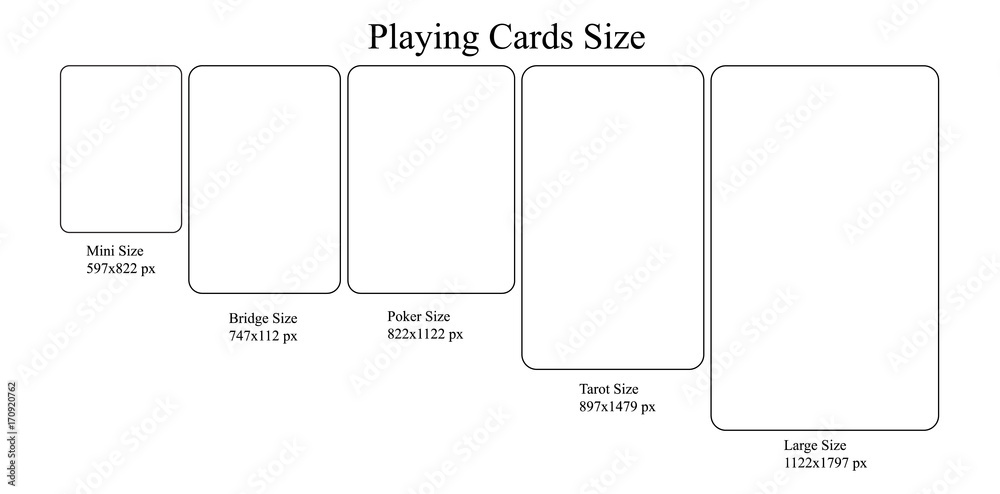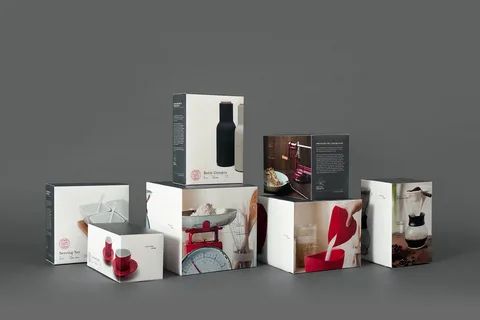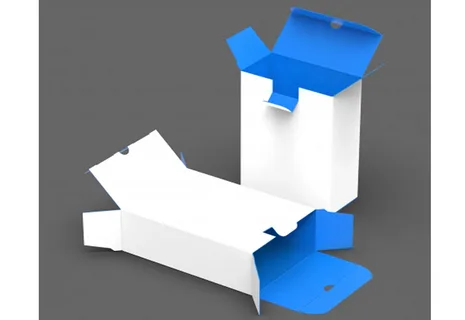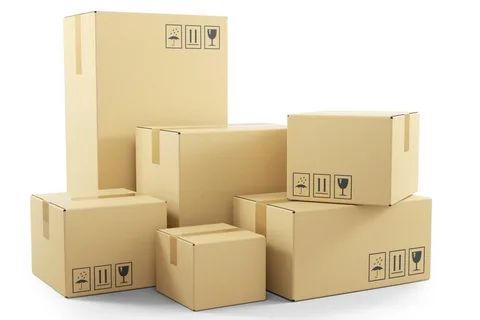Playing cards are a timeless symbol of entertainment, strategy, and creativity. Whether you’re designing custom cards for your brand, creating collectible decks, or just curious about standard measurements, knowing the playing card size is essential.
In this detailed guide, we’ll explore everything about playing card dimensions — from standard sizes used in poker and bridge decks to variations like jumbo or mini cards. You’ll also learn how to choose the best playing card size in Canada, understand measurement units (inches, mm, cm), and get professional insights on designing or ordering your custom cards.
What Is the Standard Playing Card Size?
The standard playing card size most people are familiar with is the poker size playing card, which measures 2.5 inches × 3.5 inches (63.5 mm × 88.9 mm).
This size is commonly used in poker, magic tricks, and general-purpose playing decks. It offers the perfect balance between comfort, visibility, and functionality.
Key Playing Card Size Dimensions (Standard)
| Card Type | Size (in inches) | Size (in mm) |
| Poker Size Playing Cards | 2.5” × 3.5” | 63.5 mm × 88.9 mm |
| Bridge Size Playing Cards | 2.25” × 3.5” | 57 mm × 89 mm |
| Jumbo Playing Cards | 3.5” × 5” | 88.9 mm × 127 mm |
| Mini Playing Cards | 1.75” × 2.5” | 44 mm × 63 mm |
As you can see, the size of playing cards depends on the deck’s intended use — poker, bridge, or novelty cards each follow slightly different standards.
Why Playing Card Size Matters
Card dimensions are more than just numbers. The size of a playing card influences gameplay, handling comfort, and even the visual impact of the design.
Functionality
Smaller cards like bridge size playing cards are easier to hold, especially for games requiring multiple cards in hand.
Design & Print Layout
When designing custom cards, playing card size dimensions dictate the artwork’s scale, border spacing, and font visibility.
Brand Consistency
If you’re printing decks for retail or promotional use, maintaining a consistent standard playing card size ensures a professional look.
Standard Playing Card Sizes Around the World
While the standard size for playing cards is generally universal, there are subtle differences based on regional preferences.
North America (Canada & USA)
- Poker size: 2.5” × 3.5” (most common)
- Bridge size: 2.25” × 3.5” (slightly narrower)
Europe
- Bridge and poker sizes are both used, but card manufacturers may also offer metric-based options like 64 mm × 89 mm.
Japan and Asia
- Often follow compact or collectible card sizes, closer to trading card games like Pokémon and Yu-Gi-Oh.
Comparing Different Playing Card Sizes
1. Poker Size Playing Cards
- Dimensions: 2.5″ × 3.5″
- Use: Poker, Texas Hold’em, magic tricks, and most commercial decks.
- Pros: Ideal for easy shuffling and durability.
- Popular Brands: Bicycle, Aviator, and Bee.
2. Bridge Size Playing Cards
- Dimensions: 2.25″ × 3.5″
- Use: Bridge, Rummy, and other games requiring holding multiple cards.
- Pros: Slimmer and easier to grip.
- Example: Bicycle Bridge Size Playing Cards, Copag Bridge Decks.
3. Jumbo Playing Cards
- Dimensions: 3.5″ × 5″
- Use: Stage performances, educational purposes, or visual demonstrations.
- Pros: Large numbers, great for audiences or children.
4. Mini Playing Cards
- Dimensions: 1.75″ × 2.5″
- Use: Travel games or novelty decks.
- Pros: Compact and portable.
Playing Card Size in Inches, MM, and CM
Let’s convert the playing card sizes into multiple measurement units for clarity:
| Card Type | Inches | Millimeters | Centimeters |
| Poker Size | 2.5 × 3.5 | 63.5 × 88.9 | 6.35 × 8.89 |
| Bridge Size | 2.25 × 3.5 | 57 × 89 | 5.7 × 8.9 |
| Jumbo Size | 3.5 × 5 | 88.9 × 127 | 8.89 × 12.7 |
| Mini Size | 1.75 × 2.5 | 44 × 63 | 4.4 × 6.3 |
Understanding these conversions is helpful when ordering playing card decks in Canada, as local printers may use either metric (mm/cm) or imperial (inches) systems.
What Is the Size of a Standard Deck of Playing Cards?
A deck of standard playing cards (52 cards plus jokers) typically stacks up to 0.75 to 1 inch thick (19–25 mm).
The playing card deck size can vary depending on:
- Card stock thickness
- Finish or coating
- Number of cards (some custom decks have 54 or 56 cards)
The box size for standard playing cards is approximately 2.6” × 3.6” × 0.9”, ensuring a snug and protective fit.
Playing Card Box Size — What to Know
When creating custom decks, the playing card box size should perfectly match your card dimensions to prevent bending or shifting.
Standard Tuck Box Dimensions:
- For Poker Size: 2.6” × 3.6” × 0.9”
- For Bridge Size: 2.4” × 3.6” × 0.9”
Expert Tip:
Always allow a 1–2 mm tolerance for packaging, especially if you’re printing with thick cardstock or adding foil stamping.
How to Get Custom Playing Card Size in Canada
If you’re looking to design and print personalized decks, here’s how to get the right playing card size in Canada.
Step 1: Choose Your Card Type
Decide whether you need:
- Poker size playing cards for gaming
- Bridge size cards for easy handling
- Jumbo or mini decks for promotions or education
Step 2: Determine Card Dimensions
Confirm your standard playing card size in inches or mm with your printer before finalizing your artwork.
Step 3: Design Your Layout
Use a print-safe margin of 3 mm and ensure key text or images aren’t cut off.
Step 4: Select Card Material
Opt for high-quality paper (usually 300–350 GSM) with smooth or linen finish for durability.
Step 5: Contact a Trusted Custom Printing Service
You can easily get tailored decks from reputable Canadian printers like buycustombox, offering custom shapes, coatings, and finishes.
Experience, Expertise, and Professional Insights
As professionals with experience in printing and packaging, we’ve seen countless businesses struggle with card sizing during production. Here’s what experts recommend:
- Use templates provided by your printing service to avoid sizing errors.
- Stick to standard sizes unless you have a specific design need.
- Check bleed and trim areas in your design files.
- Request a sample before bulk printing to verify alignment and color accuracy.
These steps ensure that your playing cards size aligns perfectly with international standards while reflecting your brand identity.
Factors That Affect Playing Card Size Choice
1. Purpose
Games like Poker and Blackjack use standard sizes, while educational or novelty decks might need jumbo or half-size variations.
2. User Demographics
Children, elderly users, or performers often prefer jumbo size playing cards for better readability.
3. Design Complexity
Highly detailed artwork may require larger cards to maintain visibility and clarity.
4. Packaging and Storage
Custom playing card box size considerations are crucial if you plan retail distribution or gifting.
Are All Playing Cards the Same Size?
No — while most decks follow the standard size of a playing card (2.5” × 3.5”), variations exist depending on the purpose and region.
For instance:
- Bridge cards are narrower.
- Bicycle Jumbo decks feature larger symbols.
- Trading cards (like Pokémon) are slightly smaller (2.45” × 3.46”).
These differences are minor but can impact how cards feel and handle during use.
Playing Card Size in Popular Brands
| Brand | Type | Dimensions (inches) | Notes |
| Bicycle | Poker | 2.5 × 3.5 | Industry standard |
| Bicycle Bridge | Bridge | 2.25 × 3.5 | Narrower |
| Bee | Poker | 2.5 × 3.5 | Casino-grade |
| Aviator | Poker | 2.5 × 3.5 | Smooth finish |
| Copag | Bridge | 2.25 × 3.5 | Plastic playing cards |
| KEM | Poker | 2.5 × 3.5 | High-end composite material |
Difference Between Bridge Size and Poker Size Playing Cards
| Feature | Bridge Size | Poker Size |
| Width | 2.25” | 2.5” |
| Height | 3.5” | 3.5” |
| Usage | Bridge, Rummy | Poker, Magic |
| Handling | Easier for smaller hands | Better visibility |
| Common in | Canada, UK | USA, Casinos |
If you often play games requiring multiple cards in hand, bridge size playing cards may be more comfortable. For most other games, poker size remains the go-to option.
How to Design Custom Playing Cards (Like a Pro)
To design professional-quality playing cards, follow these expert techniques:
- Use Vector-Based Design Software: Adobe Illustrator or Affinity Designer ensures sharp edges and print clarity.
- Set the Correct Dimensions: Begin with 2.5 × 3.5 inches plus bleed area.
- Keep Text Within Safe Zones: Avoid placing text or icons near the edges.
- Select the Right Color Mode: Always design in CMYK for print accuracy.
- Test Print Before Mass Production: Catch potential errors early.
Following these steps ensures your cards meet both visual and dimensional perfection.
FAQs About Playing Card Size
1. What is the standard size of a playing card?
The standard playing card size is 2.5 × 3.5 inches (63.5 × 88.9 mm), commonly called the poker size.
2. Are bridge size and poker size cards the same?
No, bridge cards are narrower at 2.25 inches wide, while poker cards are 2.5 inches wide.
3. What size are jumbo playing cards?
Jumbo size playing cards measure about 3.5 × 5 inches, great for stage performances or large audiences.
4. What is the average size of playing cards in mm?
The average playing card size in millimeters is 63.5 × 88.9 mm for poker decks.
5. Are all playing cards the same size?
Most are close to the standard, but special decks like UNO, Pokémon, or Tarot differ slightly.
6. How thick is a deck of playing cards?
A standard deck (52 cards) is around 0.75–1 inch thick, depending on material and coating.
7. What is the playing card box size?
The standard playing card box measures about 2.6 × 3.6 × 0.9 inches.
8. What are playing card sizes in cm?
Poker size = 6.35 × 8.89 cm; Bridge size = 5.7 × 8.9 cm.
Conclusion
Understanding the playing card size is crucial for creating professional decks that handle beautifully, look sharp, and meet international standards. Whether you’re a game designer, business owner, or collector, choosing the right playing card size dimensions ensures your project is both functional and aesthetically pleasing.
From poker size classics to bridge and jumbo variations, the right dimensions can elevate your design and gameplay experience.
For high-quality custom printing in Canada, professional companies like buycustombox offer complete customization options to ensure your playing cards look and feel perfect.








